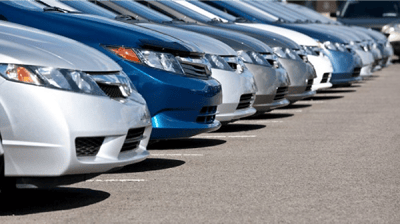 Car prices have been steadily rising over the past few years, and despite a promising decline in used car costs in the second half of 2022, the upward trend shows signs of continuing in 2023. There are a variety of factors contributing to this increase in prices, from supply chain disruptions to changes in consumer demand. Let's explore several of these factors:
Car prices have been steadily rising over the past few years, and despite a promising decline in used car costs in the second half of 2022, the upward trend shows signs of continuing in 2023. There are a variety of factors contributing to this increase in prices, from supply chain disruptions to changes in consumer demand. Let's explore several of these factors:
COVID-19 pandemic
At the onset of the COVID-19 pandemic, many automakers were forced to shut down factories temporarily, leading to shortages of critical components such as semiconductors, steel, and plastics. These shortages made it difficult to produce enough cars to meet a level of demand that, according to economists Susan Helper and Evan Soltas, automakers had underestimated. “Expecting weak demand, they cancelled orders of semiconductors, an item with a long lead time and with an increase in demand from other industries.” Shortages in other industries, along with just-in-time manufacturing systems that minimize inventory, compounded the effect, setting production back for a long time.
Supply chain disruptions
Several factors converged to create major supply chain disruptions after COVID-19. The pandemic caused a surge in demand for semiconductors, which are used in everything from consumer electronics to cars. This demand was already high prior to the pandemic because of the rise of electric vehicles and cars equipped with autonomous driving technologies. To make matters worse, semiconductor production is concentrated in only a handful of key locations, making the supply chain vulnerable to disruptions and limiting automakers’ ability to negotiate prices or secure long-term supply contracts.
It doesn’t stop there. “The computer chip shortage is only one factor squeezing the inventory of available vehicles,” says CNN Business senior writer Chris Isidore. “Other auto parts, including tires and resins, are starting to be in short supply.” Additionally, the cost of labor and some materials have also gone up, such as steel. All of these increased costs are passed on to consumers in the form of higher vehicle prices.
Increased demand for pricier vehicles
Another reason car prices are rising is an increased demand for more expensive vehicles. The pandemic boosted interest in personal transportation as people looked to avoid public transportation and ride-sharing services. Many people also benefited from more disposable income due to reduced spending on travel and entertainment during lockdowns, making it easier for them to purchase a new car. Additionally, American consumers have been looking for larger vehicles — such as SUVs and trucks — and for more high-tech features, all of which adds to the cost of production. “The shift away from less expensive sedans to pricier SUVs and pickups has been going on for years, and it was accelerating even before the pandemic,” Isidore writes. In response, automakers are cutting production of their less expensive, less popular models.
These are just some of the many factors contributing to the rise in car prices. Supply chain disruptions caused by the COVID-19 pandemic have led to shortages of critical components, while increased demand for cars has led to a shortage of vehicles. Higher costs of materials and labor, changes in consumer preferences, and government regulations are also contributing to the rise in prices. For assistance with auto financing, contact a First Federal Bank representative today!